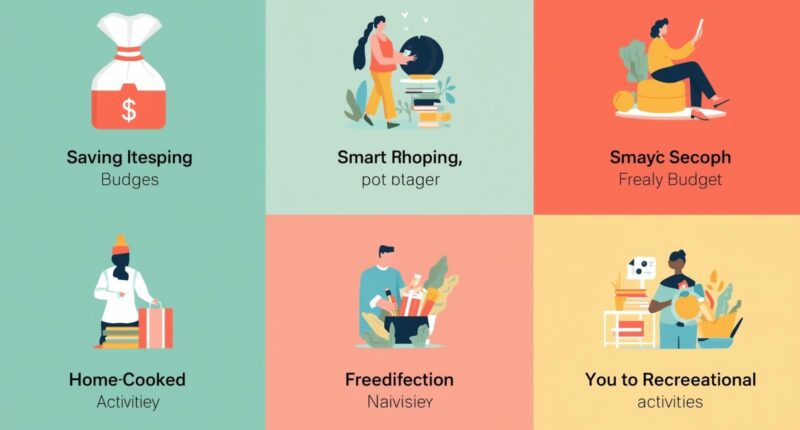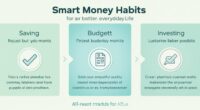How to Manage Your Lifestyle Without Breaking the Bank
In today’s fast-paced world, it’s easy to get caught up in the pressure to live lavishly — designer clothes, fancy meals, and expensive vacations. However, a fulfilling life doesn’t require overspending. The key is learning how to manage your lifestyle without breaking the bank while still enjoying comfort, happiness, and balance.
In this guide, we’ll discuss smart strategies to help you maintain a satisfying lifestyle, save money, and achieve your financial goals.
Why Lifestyle Management Matters
Your lifestyle directly affects your finances. Every purchase, subscription, and leisure activity shapes your spending habits. Many people fall into the “lifestyle inflation” trap — as their income grows, so does their spending.
To avoid financial stress, it’s essential to build a lifestyle that matches your budget and priorities, not one dictated by social pressure.
(📌 Relatedb Link: How to Choose a Home That Fits Your Lifestyle)
Step 1: Identify Your Financial Priorities
The first step toward managing your lifestyle is understanding what truly matters to you. Ask yourself:
-
What makes me feel genuinely fulfilled?
-
Which expenses are necessary, and which are impulsive?
-
How much do I want to save or invest monthly?
Once you identify your priorities, you can align your spending accordingly. For instance, you might value travel more than luxury shopping — so you allocate funds toward experiences instead of material goods.
Step 2: Create a Realistic Monthly Budget
Budgeting doesn’t mean restricting your life; it means controlling it. A smart budget helps you enjoy your favorite things while keeping your finances balanced.
Use the 50/30/20 Rule
-
50% – Needs (housing, food, transportation, utilities).
-
30% – Wants (entertainment, dining, shopping).
-
20% – Savings and investments.
By following this rule, you can live comfortably without financial anxiety.
Step 3: Cut Unnecessary Expenses
One of the simplest ways to save is to identify and eliminate hidden expenses.
-
Cancel unused subscriptions (streaming, gym, or apps).
-
Cook at home instead of dining out daily.
-
Use cashback and reward programs.
-
Review insurance and utility plans regularly.
Small savings each month can lead to big results over time.
Step 4: Live Smart, Not Cheap
There’s a big difference between being frugal and being cheap. Smart living means making informed choices without sacrificing quality or happiness.
Examples:
-
Buy quality clothing during sales instead of fast fashion.
-
Choose energy-efficient appliances to reduce long-term bills.
-
Share costs with friends for entertainment or travel.
Being financially wise doesn’t mean missing out — it means spending smarter.
Step 5: Make Saving Automatic
Consistency is the key to successful saving. Automate transfers to your savings account every payday before you start spending.
You can also set up automatic investments into index funds, retirement accounts, or digital saving platforms.
➡️ Tip: Learn more about personal finance planning at Investopedia.
Step 6: Build a Sustainable Lifestyle
A sustainable lifestyle means balancing financial goals with personal well-being. Focus on long-term value instead of short-term pleasures.
Here’s how:
-
Choose experiences over possessions.
-
Avoid debt-driven spending for luxury appearances.
-
Learn basic DIY skills to reduce service costs.
-
Prioritize health and fitness — a healthy lifestyle saves medical expenses.
Step 7: Use Technology to Track Your Finances
Digital tools can simplify your financial journey.
Best Budgeting Apps:
-
Mint
-
YNAB (You Need A Budget)
-
PocketGuard
-
Goodbudget
These apps help you track expenses, set limits, and visualize your progress toward financial goals.
Step 8: Adjust Your Lifestyle As You Grow
Your financial needs evolve over time. As your income increases, avoid unnecessary lifestyle inflation. Instead of buying a luxury car, invest the difference into assets like real estate, stocks, or a business.
A sustainable lifestyle grows with your financial goals — not against them.
Table: Lifestyle Choices That Save Money
| Category | High-Cost Habit | Affordable Alternative | Savings Potential |
|---|---|---|---|
| Food & Dining | Daily restaurant meals | Home-cooked meals or meal prep | $200–$400 per month |
| Entertainment | Frequent movie nights or clubs | Streaming, game nights, or free events | $100–$250 per month |
| Transportation | Owning multiple cars | Using public transport or carpooling | $150–$300 per month |
| Shopping | Impulse online buying | Planned seasonal purchases | $100–$200 per month |
| Travel | Luxury resorts | Budget-friendly local trips or Airbnb stays | $300–$600 per trip |
Step 9: Focus on Long-Term Financial Freedom
Managing your lifestyle wisely today ensures future freedom. Saving, investing, and living below your means can help you:
-
Retire comfortably.
-
Afford your dream home or vacation.
-
Reduce financial stress.
The ultimate goal is to build wealth while enjoying life, not sacrificing one for the other.
Final Thoughts
Learning how to manage your lifestyle without breaking the bank is about balance, self-awareness, and discipline. It’s not about deprivation — it’s about smarter choices.
By setting priorities, budgeting wisely, and focusing on long-term goals, you can create a lifestyle that’s both enjoyable and financially sustainable.
Remember: the best lifestyle is one you can afford without stress, debt, or guilt.









